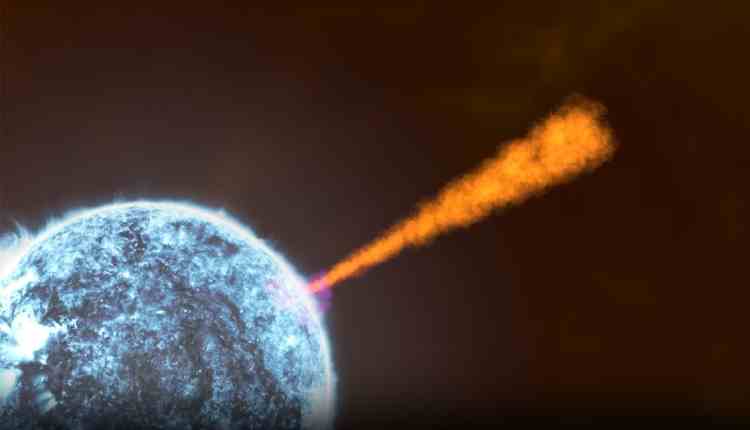New York: The brightest ever gamma-ray burst, which was detected October last year, may have been powered by its unique jet structure, according to a new study.
The burst known as GRB 221009A is known to be the largest explosion since the Big Bang. It was found to occur once in every 10,000 years and was 70 times brighter than any yet seen.
However, scientists were not able to understand the reason.
Now, in the study, published in the journal Science Advances, they used NASA’s NuSTAR (Nuclear Spectroscopic Telescope Array) observations of the event to find how the collapsing star ejected a jet of material that had a shape not previously observed among gamma-ray burst jets, as well as other unique characteristics.
It’s possible that the source of these distinctions is the progenitor star, the physical properties of which could influence the characteristics of the burst. It’s also possible that an entirely different mechanism launches the very brightest jets into space, the scientists said.
“The only way to produce a different jet structure and vary the energy is to vary some property of the star that exploded, like its size, mass, density, or magnetic field,” said Eleonora Troja, Professor of physics at the University of Rome, who led NuSTAR the observations of the event.
“That’s because the jet has to basically force its way out of the star. So, for example, the amount of resistance it meets would potentially influence the features of the jet,” Troja said.
Gamma rays are the most energetic form of light in the universe yet invisible to the human eye.
But GRB 221009A, was a long gamma-ray burst, so bright that it effectively blinded most gamma-ray instruments in space. Scientists had to reconstruct the event with data from NASA’s Fermi Gamma-ray Space Telescope to determine its actual brightness.
Dubbed as BOAT or brightest of all time, the GRB 221009A was also detected by Hubble and James Webb space telescopes, NASA’s Wind and Voyager 1 spacecraft, as well as European Space Agency’s Solar Orbiter.
Similar to other gamma-ray bursts, GRB 221009A had a jet that erupted from the collapsing star like it was shot into space from a fire hose, with gamma rays radiating from the hot gas and particles at the jet’s core.
But in all previously observed gamma-ray bursts, the jet remained remarkably compact and there was little to no stray light or material outside the narrow beam.
However, in GRB 221009A the jet had a narrow core with wider, sloping sides.
While some of the most energetic gamma-ray jets have shown similar properties, yet the energy of the material in GRB 221009A also varied.
This means that instead of all the material in the jet having the same energy – like a single bullet shot from a gun — the energy of the material changed with distance from the jet’s core. This has never been observed in a long gamma-ray burst jet before, the scientists said.
(IANS)













